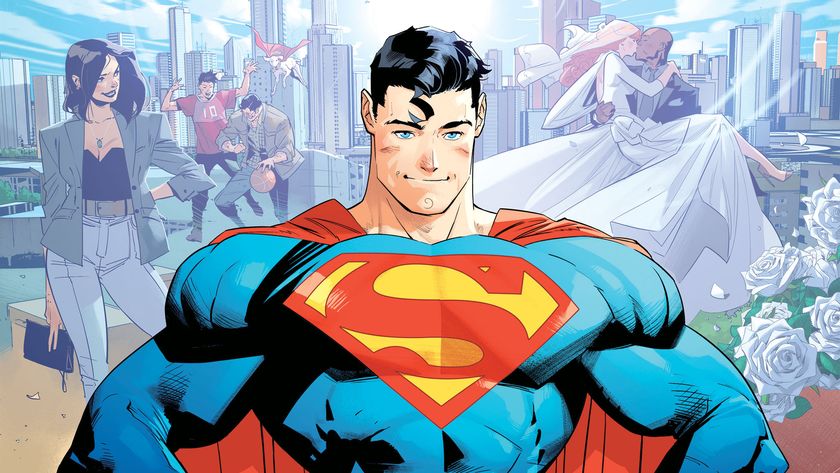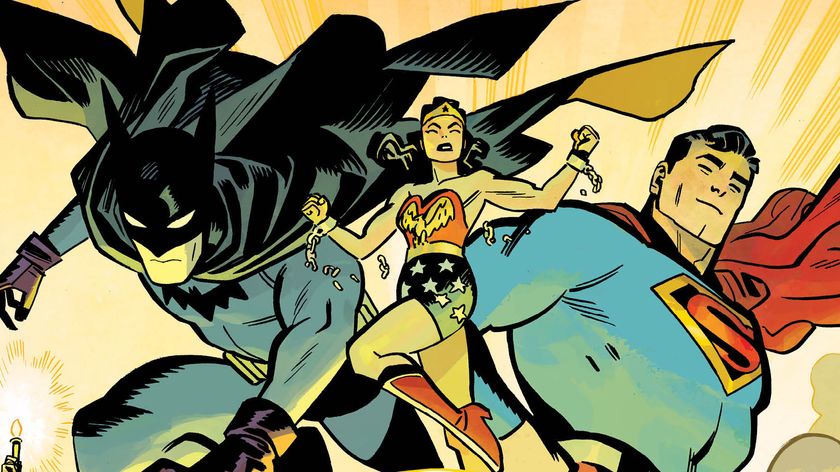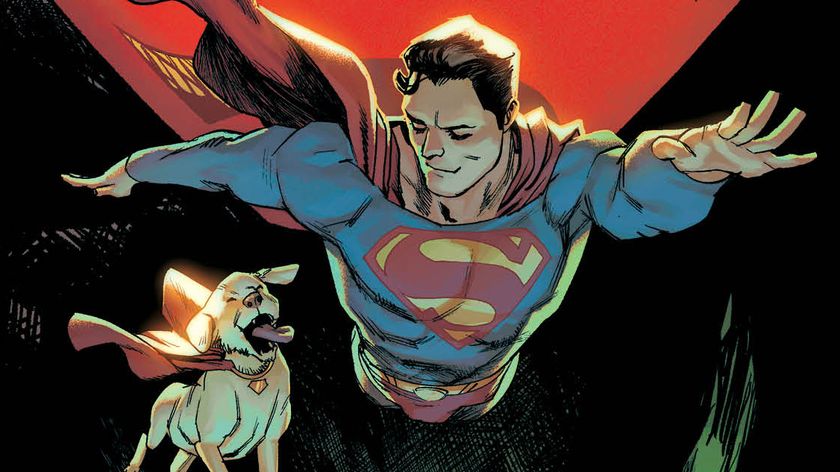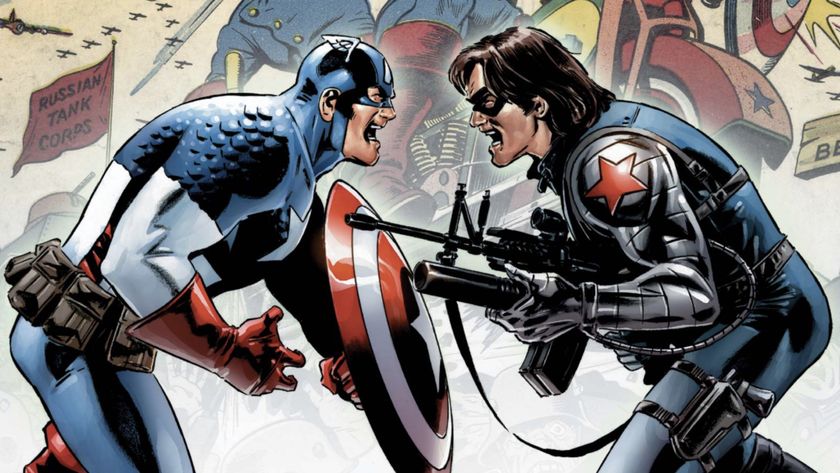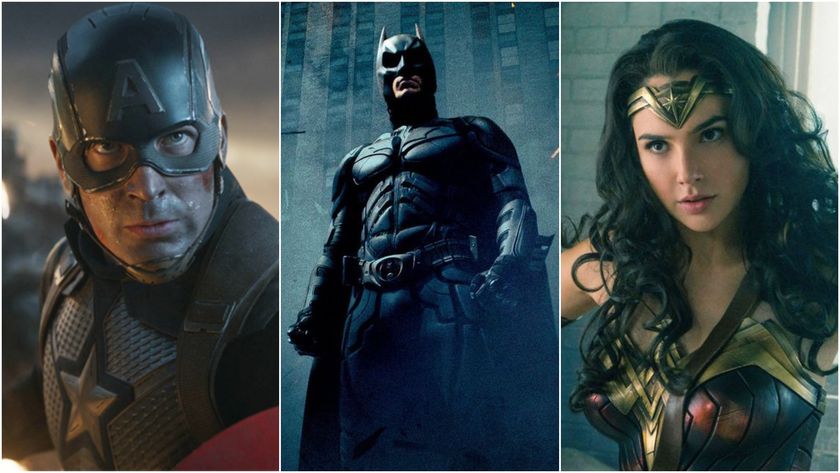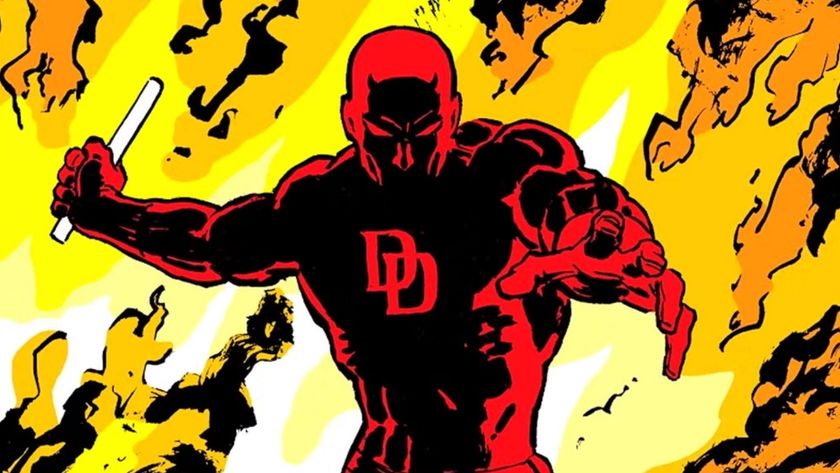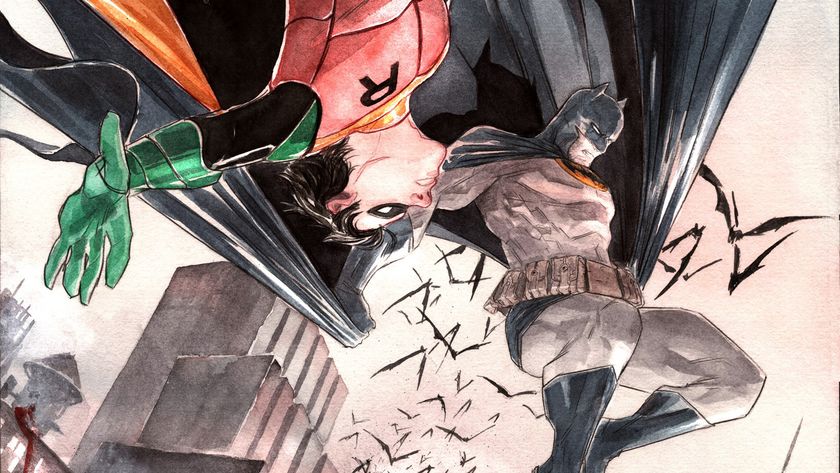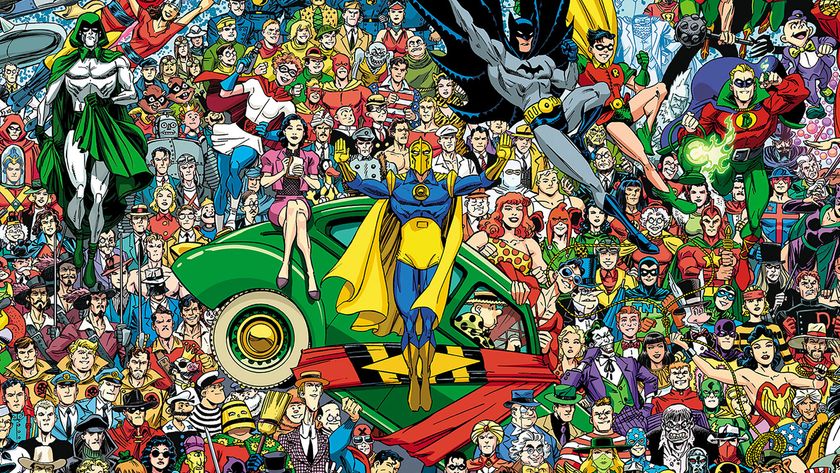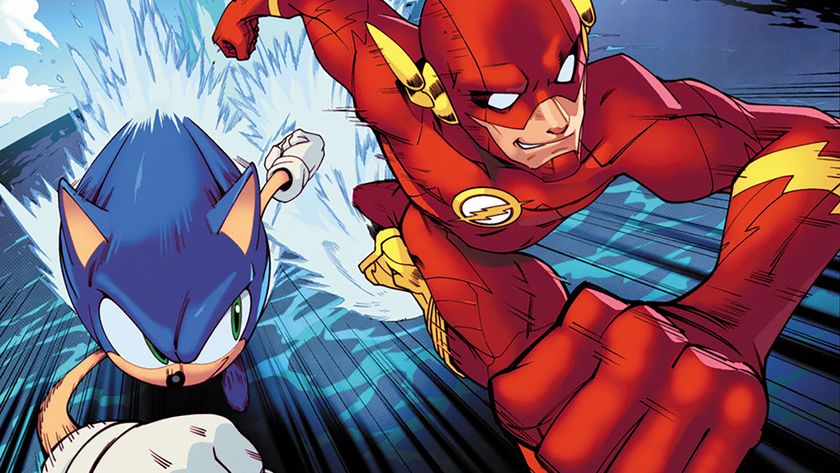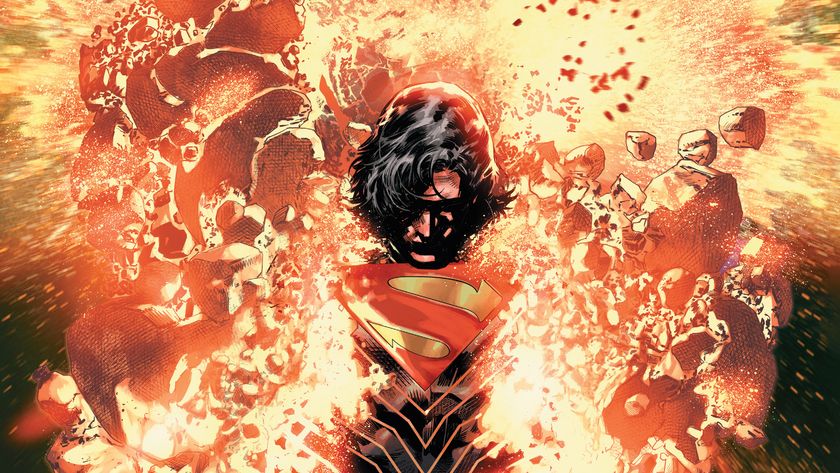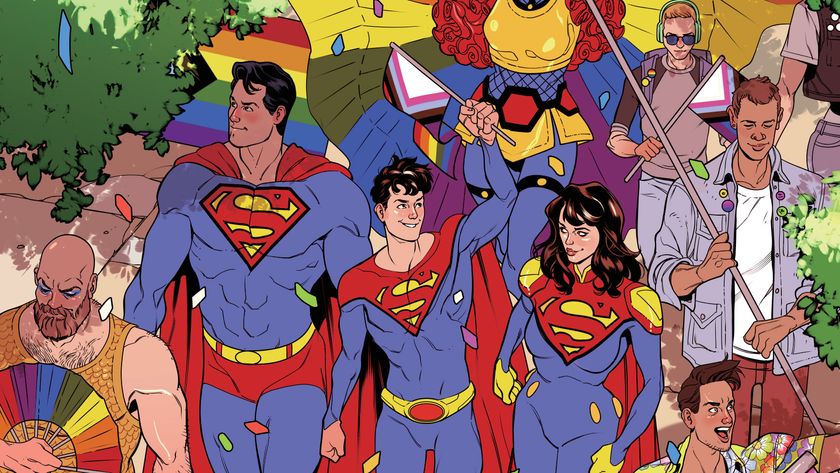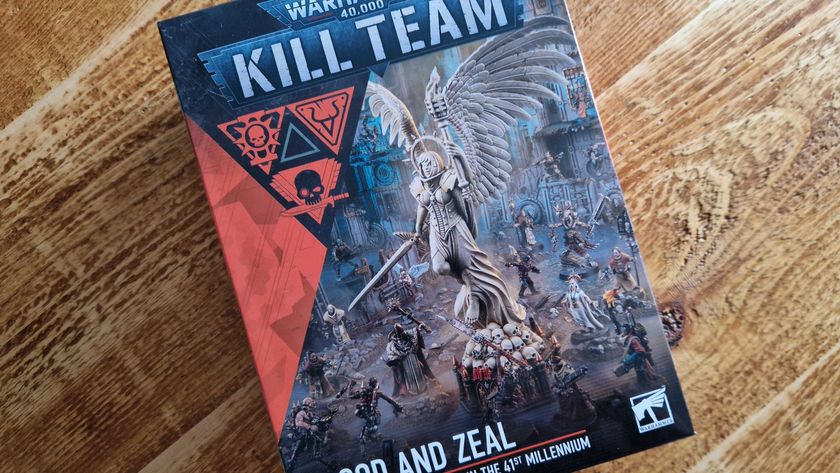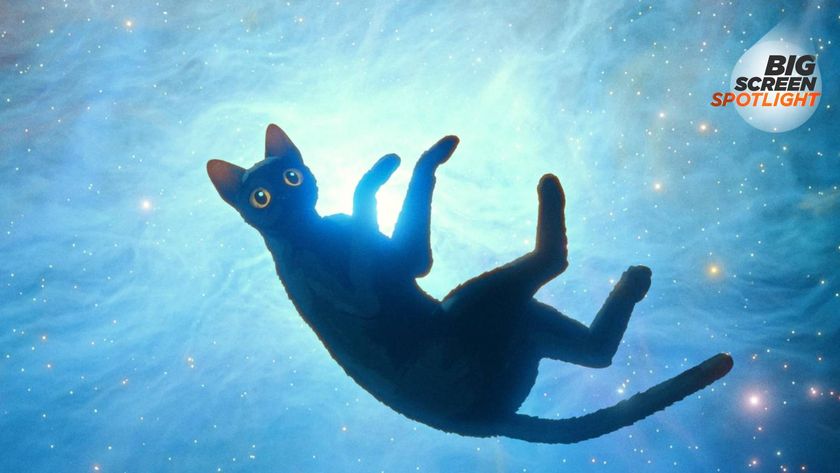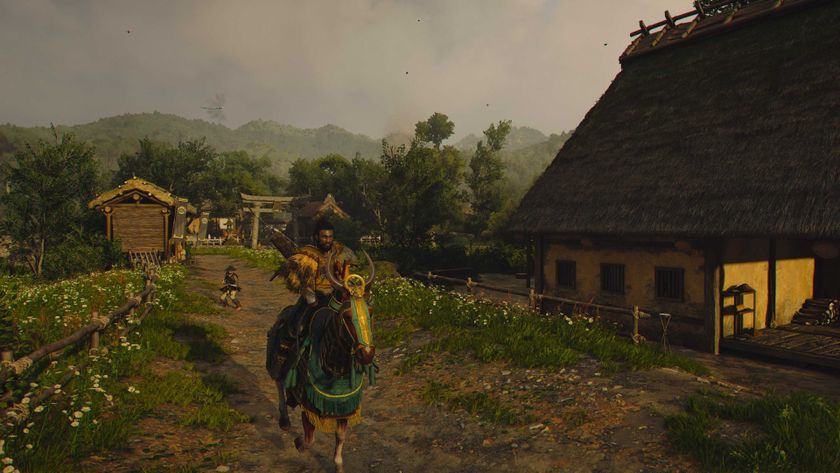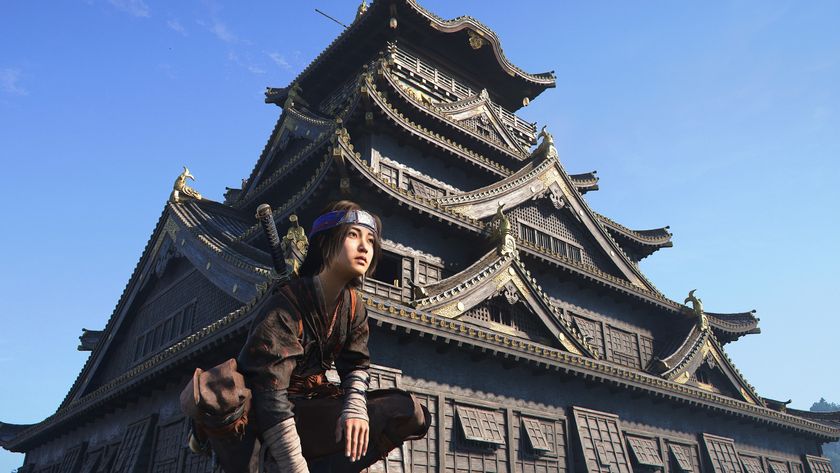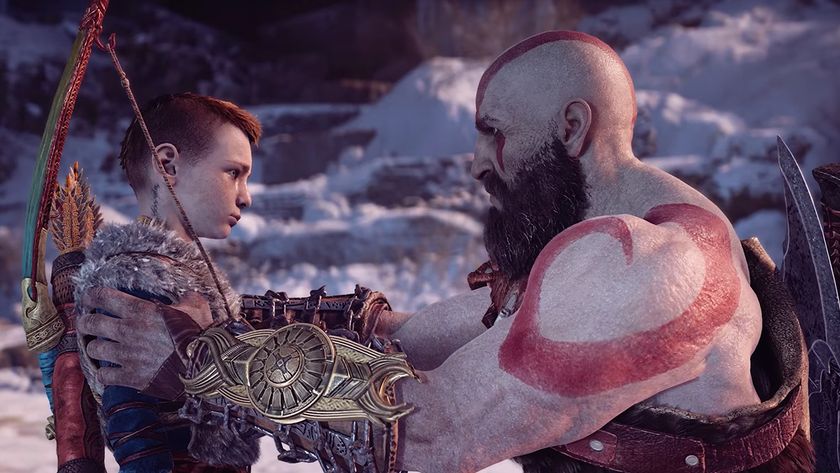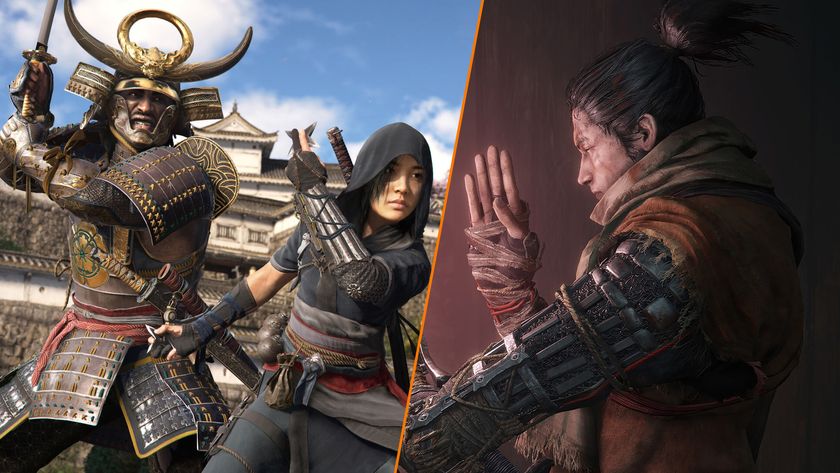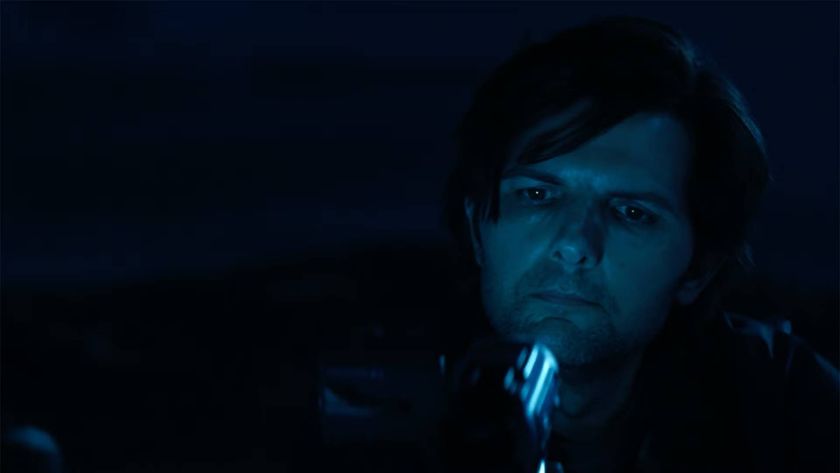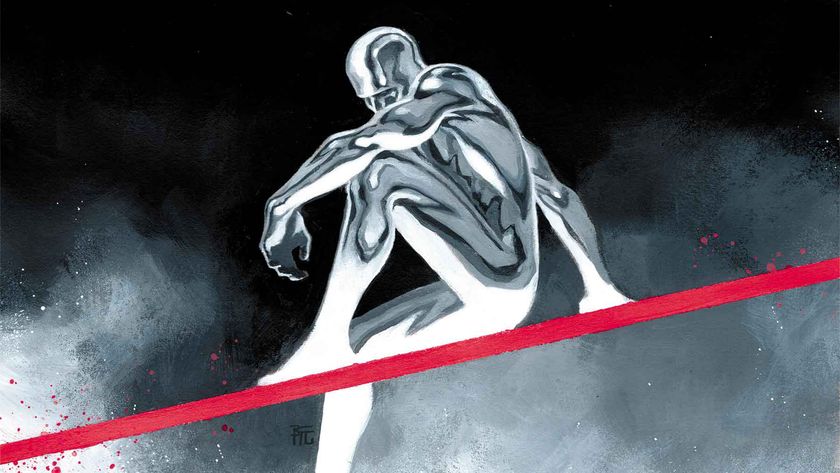The best Superman stories of all time
It's Superman's 85th birthday, so here's our pick of 10 of his best stories
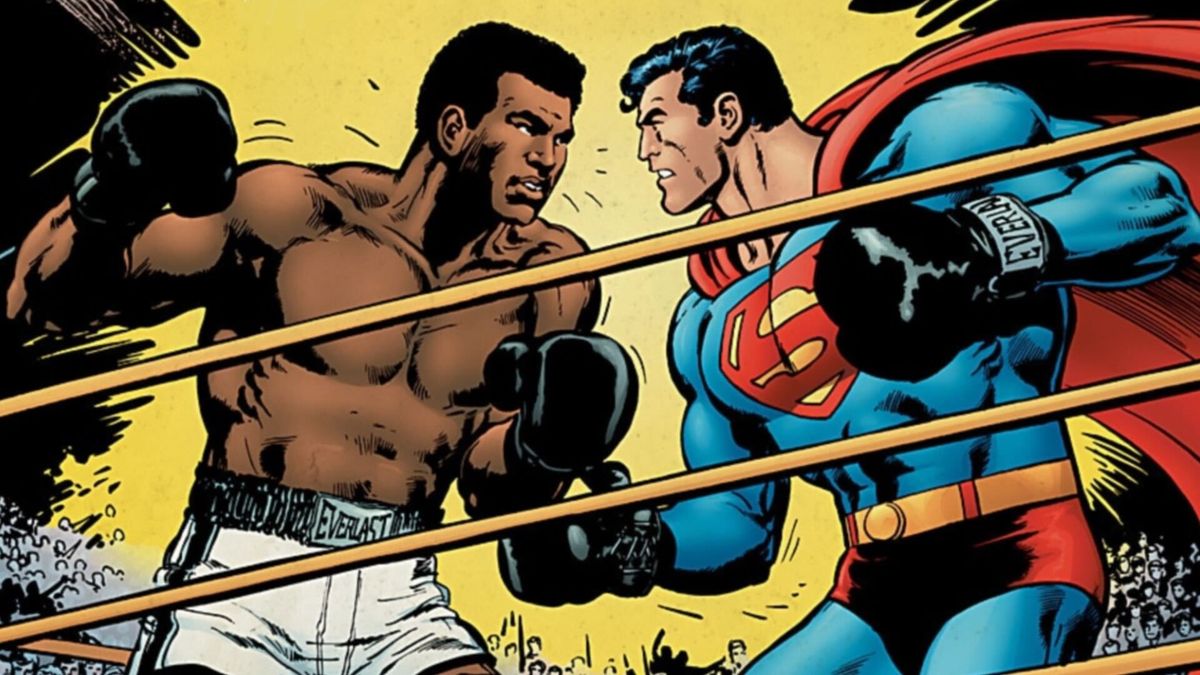
It's April 18 and that means it's the Big Blue Boy Scout's birthday! Yep, it's the 85th anniversary of the publication of Action Comics #1, the issue that introduced Superman to the world and changed the face of comics in the process.
There's no doubt that things would be very different without Jerry Siegel and Joe Shuster's creation. Superman isn't only the best-selling comics character of all time, but he's also arguably one of the most influential characters in all of pop culture. There had been superheroes before, of course, but there's little doubt that Kal-El set the template for what costumed heroes would look and feel like in the decades that followed. He truly was, and is, the Man of Tomorrow.
So, as James Gunn teases the beginning of production on Superman: Legacy, and as fans around the world celebrate their hero's birthday (he's gonna need a super-sized cake to fit all of those candles), we decided that it was time we took a look back at the best Superman stories of all time.
10. Superman Smashes The Klan

Gene Luen Yang and Gurihiru venture into the past for 2019's three-part tale, Superman Smashes The Klan. Gurihiru's clean colors and manga style lend Superman Smashes The Klan that mainstream bookstore appeal, while Luen Yang's funny and sensitive script balances its message with a hearty slice of ol' fashioned fun.
Basing this on a bygone radio serial entitled 'Clan of the Fiery Cross,' Gene Luen Yang invokes a time before Superman had the full power of flight to tell a tale of integration and discrimination in '30s America. When Robert and Tommy Lee's family move to the white-majority Metropolis suburbs, they attract harassment from the abhorrent Ku Klux Klan. Enter Superman!
Luen Yang roots his story in the real-life struggles of the Asian Community during the tumult of the early 20th Century, relating Superman's clean-cut persona to his own experiences as the son of immigrants. Gurihiru's uncluttered linework is immediately impactful, splashing primary colors over bold shapes for an animated feel.
Superman Smashes the Klan is the best example of a modern introductory point to the Man of Steel, and it's surely a book the creators of tomorrow will cite as an influence. Not shying away from the mundane evils of everyday racism while remaining accessible for all ages, this is an important story that remains sadly very relevant.
Comic deals, prizes and latest news
Get the best comic news, insights, opinions, analysis and more!
9. Funeral for a Friend
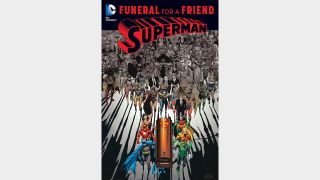
Sandwiched in-between Death of Superman and Reign of the Supermen!, 1993's line-wide crossover Funeral for a Friend explored the impact of Superman's untimely end across its nine installments. Eager to hammer home the fact that yes, Superman is dead, Funeral for a Friend is a snapshot of a peculiar time in Superman history and an honest attempt at venerating the greatest of heroes.
With bowed heads and solemn tones, we explore the Kent family's grief, both for Superman and the 'missing' Clark Kent. Lex Luthor finds himself empty now that his arch-rival has been taken off the board, using a shapeshifting Supergirl to take the Man of Steel's place in the world. Funeral for a Friend zig zags across Metropolis in search of emotional closure for Kal-El's supporting cast. Just as honest people wish to honor a friend, so do unscrupulous profiteers try to hawk memorial merchandise.
Dan Jurgens's art is all over this crossover; his coiffed hair and impossibly pumped musculature are a constant reminder of the time and place. Jerry Ordway's morbid part 1 sees Metropolis forcing itself to face the sobering reality of the body itself, while Roger Stern deals with Luthor and Supergirl's reaction. Louise Simonson writes the series highlight with Man of Steel #20's disastrous funeral, while the whole story is bound by the impressionistic and tone-focused coloring of Glenn Whitmore.
Funeral for a Friend is not a perfectly told technical masterpiece, nor is it an example of elegant draftsmanship. It is an honest examination of a world without Superman that attempts to rise above the sheer spectacle of Death of Superman to change the DC Universe.
8. Superman vs. Muhammad Ali
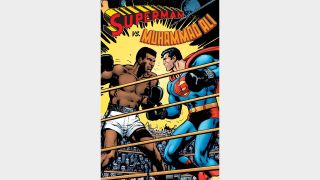
Coming in at a wallet-busting $2.50 in 1978 (that's just over $10 in modern times due to inflation), Superman vs. Muhammad Ali marks one of the first real attempts at a truly premium story. Green Arrow and Green Lantern faves Denny O'Neil, Neil Adams, and Dick Giordano meld fantasy and reality for this battle between greats.
When the Scrubb race comes to Earth in search of its greatest warriors, they challenge boxing legend Muhammad Ali to fight their greatest warrior to prove their race's supremacy. Superman disagrees, and so the stage is set for a boxing bout of intergalactic proportions. Adams and Giordano's excellent likeness of Ali combined with O'Neil's respect for the man make a superhero worthy of the Justice League out of the talented athlete. Without the power of Earth's yellow sun, the inexperienced Superman falls to Ali's perfect pugilism. Superman takes on the Scrubb Armada as Ali knocks out their best champion in the ring.
A visually sumptuous blockbuster of a comic book, this is fundamentally a story about strengths and weaknesses. O'Neil fearlessly shows a defeated Superman, humble in defeat and willing to work as part of a team to win the day. Is there a more vulnerable image than that splash page of a bruised Superman, boxing gloves still in hand?
7. Action Comics #23
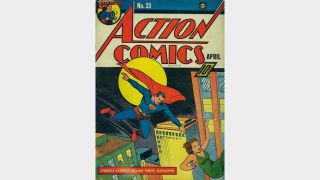
Wartime journalist Clark Kent uncovers a mastermind orchestrating a prolonged war between the fictional countries of Golonia and Toran in a bid to destroy them both – and it's none other than Lex Luthor. Not yet given a first name and with an uncharacteristic mop of red hair, Luthor's debut proves that actions are more important than aesthetics.
Action Comics #23 (collected in Superman: The Golden Age Vol. 2) is a pretty successful first outing for Superman's greatest villain, managing to capture Superman and expose him to weakening 'green rays'. Appearing in very much a gestational form of the character but retaining the essence of what he would later become, Luthor easily bends minions to his will, has near-omnipotent surveillance powers and effortlessly puppets two armies against each other.
Jerry Siegel and Joe Shuster were clearly feeling the impact of World War II here – released in 1940, this is a tonally dark issue that sees Clark and Lois immersed in violence. The heavy events that Clark and Lois are embroiled in make The Daily Planet seem like the home of hard-hitting reporting, and this issue is the first time the newspaper was named.
Against the murky setting of a war on foreign soil, and with a hefty body count on Supes' conscience, this untitled story isn't the traditional Man of Steel adventure by any means. Still, it is an excellent example of how, even when a character's first appearance is almost unrecognizable from his modern form, the core of the character remains.
6. Superman: Secret Identity
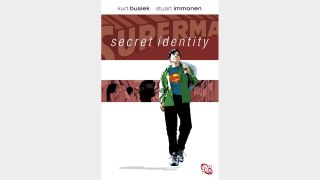
A high concept alternate take on the Man of Steel that blurs our reality with the DC Universe we all know so well, Kurt Busiek and Stuart Immonen's Superman: Secret Identity explores the rise and fall of a Superman who grew up reading Superman.
Busiek's Clark Kent is an ordinary boy who wakes up one day with the powers of the Man of Steel. Moving from his childhood home of Kansas to Manhattan, Kent defends himself from schoolyard bullies before secretly assisting citizens in need. But life in the public eye attracts tragedy - this Superman's public debut ends in death and his good deeds eventually draws the eye of the US Government. As he ages, Clark's powers begin to fade, but his good work is continued by his daughters.
Immonen's evocative coloring contrasts against the deep black of his inkwork to produce a visually arresting book. Uncomfortably tight close-ups and realistic studies push the inner weight and responsibility of Busiek's script.
As would be expected from the title, Busiek explores the personal implications of suddenly gaining superpowers, its effect on personal relationships, and how the world would really react to such a man. Tonally, Secret Identity sits between grim realism and bright fantasy to produce a Superman for a world that isn't perfect but also isn't without hope.
5. Superman: Red Son
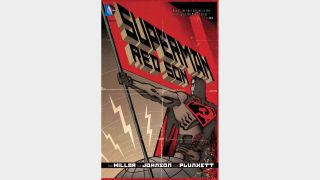
Mark Millar's prestige three-issue series asks one simple question: What would happen if Superman had been raised by the Soviet Union? 2003's Elseworlds classic Superman: Red Son melds Cold War fears with a well-realized take on an evil Superman, ably assisted by the shared artistic style of Dave Johnson and Killian Plunkett.
A thoughtful artistic approach that uses strong silhouettes and block shadowing to evoke socialist realism - the art style that typified the Soviet Union's propaganda efforts. Millar dares to show a country cower under a malevolent Superman and a Lex Luthor who manages to usher in a utopian world. Millar races through distorted versions of DC's finest heroes, plotting out a tale of paranoia and political backstabbing that thoroughly drowns Superman's inherent goodness in favor of his raw strength.
A cautionary tale about how ideology can make or break even the strongest souls, Red Son is a story that lingers in the mind.
4. For The Man Who Has Everything
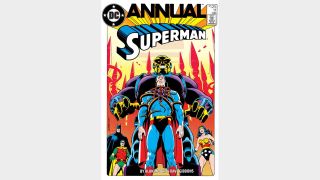
Watchmen creators Alan Moore and Dave Gibbons celebrate Superman's birthday by showing him the world of his heart's desire in For The Man Who Has Everything. Superman's sense of genuine humanity, his sheer power, his compassion; Moore and Gibbons showcase the best of The Man of Steel in Superman Annual #11's legendary lead story.
When Batman, Robin, and Wonder Woman visit the Fortress of Solitude for Superman's Birthday, they find him frozen in place with alien foliage wrapped around his chest. In his mind, Kal-El experiences a world in which Krypton did not explode.
Moore's world seeps through every line of dialogue. Although Krypton struggles with political and social problems that mirror our own, it is a world that Superman wishes for, but it is also a world he knows he ultimately cannot have. There's nothing real about a utopia, and Moore realizes that even as he describes the wildest of alien worlds.
Dave Gibbons illustrates Superman's powers with flair. From his cacophonous shout that fills the background and sends Robin flying to the climatic knock-out brawl between Superman and Mongul, Gibbons lends a real sense of gravitas to Moore's script with hulking and flamboyant characters. Yet another Moore and Gibbons classic, no Superman collection is complete without The Man Who Has Everything.
3. The Origin of Superman
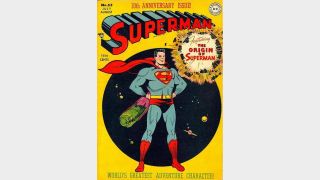
In 1948, Bill Finger and Wayne Boring marked Superman's tenth anniversary with a truly apocalyptic tale. Lifting the veil on the mystery of Superman's abilities for an audience too young for Action Comics #1's famous single page origin, Superman #53's The Origin of Superman is immersed in post-war anxiety about the atom bomb.
Focused on Jor-El's struggle to find a future for his family, the tale of a scientist desperately trying to sound the alarm to an apathetic elite is depressingly still relevant. Boring's stoic Kryptonians soon give way to the fragile and aged Kents for a series of warm hi-jinks as young Clark grows into the Superman we all know and love.
Although Superman #53 was far from the first time this story was told, its focus on the anguish of his birth parents contrasted with an adorable super-baby make it by far the most effective.
2. Superman For All Seasons
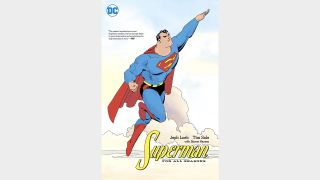
Tim Sale's squinted eyes and tree trunk necks. Bjarn Hansen's mellow and elementally inspired color-work. Although Jeph Loeb's tender script for Superman For All Seasons is an important factor in this very special limited series, the immediate impact is a visual one. Sale's style of cartooning pushes appearances to extremes: Clark is a human brick, his parents are shriveled prunes. Inspired by the character's earliest appearances, Luthor is a red-haired and jowly schemer. Perspective is regularly skewed in favor of sheer presence on the panel, every fundamental rule playfully bent by Sale to present Loeb's narrative.
Jeph Loeb's sentimental script takes the point of view of those closest to Superman to create an archetypical Superman story that examines his impact on those around him. The troubles of raising a Super-Son. The thrill of chasing the man in blue and red. The impotence felt in the face of true good. The responsibility you're frightened to live up to. In four issues, Sale, Loeb, and Hansen rattle through Clark Kent's maturation in a sparingly beautiful manner.
Whatever the weather, For All Seasons is a truly great Superman epic.
1. All-Star Superman
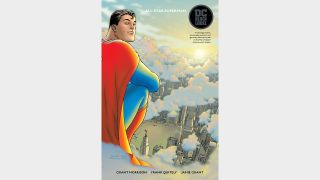
"Doomed planet. Desperate scientists. Last hope. Kindly couple."
Grant Morrison and Frank Quitely are far from the first creators to attempt a timeless and definitive take on the Man of Steel, but they have undoubtedly created the best with their 12-issue series All-Star Superman. With a story where he is finally outsmarted by Luthor, All-Star Superman shows us a Man of Steel who must confront his impending death, before eventually traveling beyond it.
Morrison indulges in a cavalcade of high concepts, flirting with time travel, gene manipulation, and living gods, as they steadily reach the end for Clark Kent. Morrison's devilishly playful tone makes All-Star Superman's bitter premise a joyful excuse for a victory lap of imaginative super-heroics.
Frank Quitely's craggy and textural approach to human beings and his flat costuming gives the series a dynamic look, inked finely and colored boldly by Jamie Grant. Quitely's interpretation of Clark Kent is a bumbling oaf who cannot appropriately control his impossibly strong frame, a sharp contrast to the pointed focus of Superman's gait.
On the cover of All-Star Superman #1, Superman sits atop a cloud. He's totally relaxed, smiling modestly as the sun breaks over the horizon. Superman might have powers beyond human comprehension, and Morrison's world is certainly outlandish, but the essence of Superman lies with Kal-El's clear head and grounded demeanor.
Looking for more Superman? Check out our list of the best artists to draw the Man of Tomorrow.
Oscar Maltby has been writing about comics since 2015. He has also written comic book scripts for the British small press and short fiction for Ahoy Comics. He resides on the South Coast of England but lives in the longbox.
